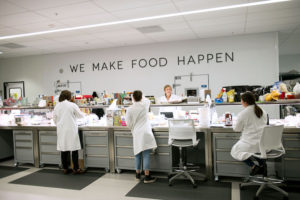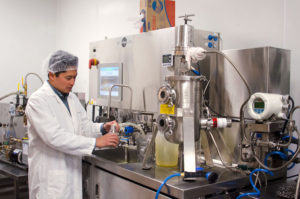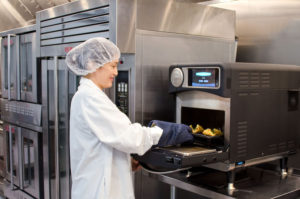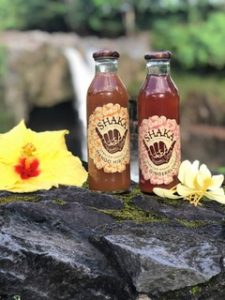
Our Did You Know? series, by contributing editor Mary George, covers hot topics and innovative technologies in the rapidly evolving food and beverage processing and packaging industry.
Walk the aisles of any food store and it’s easy to be overwhelmed with the number and variety of products on the shelves. Whether it’s Uncle Bob’s secret sauce that the family keeps telling him that he should sell, or a multinational company launching yet another version of an already established brand, an average of 20,000 new food and beverage products are launched every year.
While the inventor or producer behind each one hopes for the next Pop-Tarts (1964) or, dare we say, Corn Flakes (1894), only 15 to 20% of new products make it past the first couple of years.

It doesn’t matter if the idea starts in a home kitchen or a state-of-the-art R&D lab, birthing a new product takes time, talent, and money. “We work with food and beverage companies that range from the largest multinationals to startups that are financing ideas from personal checkbooks,” says Barb Stuckey, President & Chief Innovation Officer at Mattson, a company that helps develop new products from concept creation to commercialization.
Grocery shelves are already stocked with hundreds of thousands of choices. So, what does it take to craft a new product that consumers are hungry for? According to Stuckey, it all starts with an idea and passion.
Is it just a good idea or a good idea that will sell?
So, is Uncle Bob’s secret sauce a good idea? We are going to say yes, because this fictionalized product is really good and very unique, and Uncle Bob is passionate about it. But will it sell? That’s the million-dollar question.
“An idea that sells is one that meets a distinct consumer need, and you can articulate the need as a want or need because wants are needs to the consumer,” Stuckey says. In many cases someone comes up with an idea because they have a gut instinct, and sometimes they’re right and sometimes not.”
When helping a client develop a new food product, Mattson uses a variety of methods to find out if the idea has the potential to be embraced and purchased by consumers. These can range from social media and other online tools to grocery shopping with consumers or going into their homes as they prepare dinner.
This research provides the insight to help determine a product’s viability and addresses one of Nielsen’s top reason for new product failure — neglecting to address a broad consumer need.
According to Neilsen’s research, only 5% of concepts that lack broad appeal will deliver above-average to the brand. In fact, they could actually shrink the brand depending on how much support is misdirected to them.
From a recipe to the grocery shelf
Good news, Uncle Bob, the research shows that there’s a need for your sauce. It could be an idea that sells. So, how does it go from the kitchen to the store shelves?
If Uncle Bob worked in R&D for a large food company, provided he could “sell” the idea to management, he’d have resources readily available. Since this isn’t the case, it’s time to pull out the checkbook, seek professional advice, and be patient.

To commercialize a new food or beverage product, the recipe needs to be scaled, with commercial ingredients sourced, serving size and nutritional value determined, packaging chosen, and benchtop testing run before moving to full-scale production.
“I don’t know if people understand how many rounds of reiterations are done before a product goes to market,” Stuckey says. “It might be 40 to 50 to get to the right set of ingredients and process to put it together.”
If all goes well from the idea stage to full production, new product development can average 9 months, and that’s only if there’s an existing co-packer that can produce the product without any modifications.
Factors that can impact the amount of time needed for product development can run the gamut from shelf life studies to certifying nutritional claims (e.g., gluten-free, organic, non-GMO, whole grain) through regulatory agencies.
Also, if the product has a novel production process or packaging design, the timeline changes when there’s no co-packer that has the equipment in place, according to Stuckey.

At this point, the best-case scenario would be for the co-packer to install new equipment or procedures. In addition to increasing costs, this could extend the product development time by 3 to 6 months.
If no co-packer can’t be found, in rare cases a new facility would need to be built. “Manufacturing facilities are highly automated, and sometimes it’s almost impossible to make changes to process or packages, or production will be expensive because of the requirements,” Stuckey notes. “We don’t see it often, but sometimes the only option is to build a new facility, which obviously totally changes the timeline and budget.”
Show me the money
Whether it’s Uncle Bob self-funding or a multinational company dedicating personnel and physical resources, developing a new product costs money. Stuckey estimates that to get to the prototype stage, the investment can run from $50,000 to $100,000. Then it goes to the co-packer for trial runs, which requires line time and large batches of ingredients and, of course, more funding.
“It isn’t a cheap endeavor,” Stuckey says. “That is why we make sure the client knows what they’re getting into financially. There’s nothing worse than for someone to spend all of their money in development and not have the funds for production.”
Fortunately, Uncle Bob has chosen the right time to take a new product to market. According to Nick Fereday, Executive Director, Food and Consumer Trends at Rabobank, people and companies are investing in the food and beverage industry right now. While Rabobank traditionally lends to large farms and food companies, through the FoodBytes! competition and networking platform the company also supports startups in CPG, ag, and related technology.
“There is disruption going on in the food industry [in regard to consumers embracing local and/or small brands], and we can help very small companies,” Fereday said.
A good example of a local startup company that is seeing success in this very competitive marketplace is Shaka Tea, which earned top honors in the FoodBytes! San Francisco CPG category earlier this year. Shaka Tea, founded by Bella Hughes and her husband, Harrison Rice, created the first-ever line of Hawaiian-grown herbal teas brewed with māmaki, a herb only found and grown in the Hawaiian Islands. FoodBytes! SF judges not only recognized Shaka’s unique concept and strong sales traction, but also its support for local regenerative agriculture and economic development.
The story behind Shaka Tea exemplifies how grassroots ideas can take hold and succeed. While living abroad, Hughes drank māmaki, something that reminded her of home. In their travels, she and Rice always looked for, but couldn’t find, products that were marketed as being from Hawaii. With a passion for the product and for Hawaii, they literally started the business in their kitchen. “Harrison develops the teas in our kitchen, and our kids are the first taste testers,” Hughes says.

With no experience in the beverage industry, the couple quit their jobs in 2015 to start the company. Going on their instincts, they researched to verify what they believed with data, and they were able to get ahead of the curve with what consumers want. “We have always bottled in glass and at first people were upset about it,” Hughes says. “Now customers are glad we have glass. Also, Shaka Tea fits into all the current diet trends as it is sugar-free, non-GMO, gluten-free, dairy-free, plant-based, and vegan at a price point that’s affordable.”
In 2016, the couple put all of their savings into a first product run with a co-packer. “We ran 18,000 bottles without one single account signed,” Hughes says. “Looking back, I can’t believe we did that.”
Shaka Tea has experienced fast growth, expanding from being sold at 300 stores in Hawaii last year to national distribution with 3,000 accounts this year. The lightweight and easy-to-ship tea ingredients are grown in Hawaii and bottled in California, which is what makes national distribution possible. “This year has been an amazing year of growth,” Hughes adds.
Winning at FoodBytes! provided Shaka Tea with even more momentum for growth. “From FoodBytes! we found great mentors, an awesome attorney, and were introduced to Plug and Play [an innovation platform that brings together the best startups, investors, and the world’s largest corporations], where now we are part of Food Batch 6.”
So, the Uncle Bobs of the world do have a chance! Read more about FoodBytes! most recent winners from the September 19, 2019 competition in Chicago.
Hungry for more new food and beverage products? Watch for the Spirit of Innovation Award winners that will be presented at the Prepared Foods New Products Conference in Chicago, September 30 through October 2.







